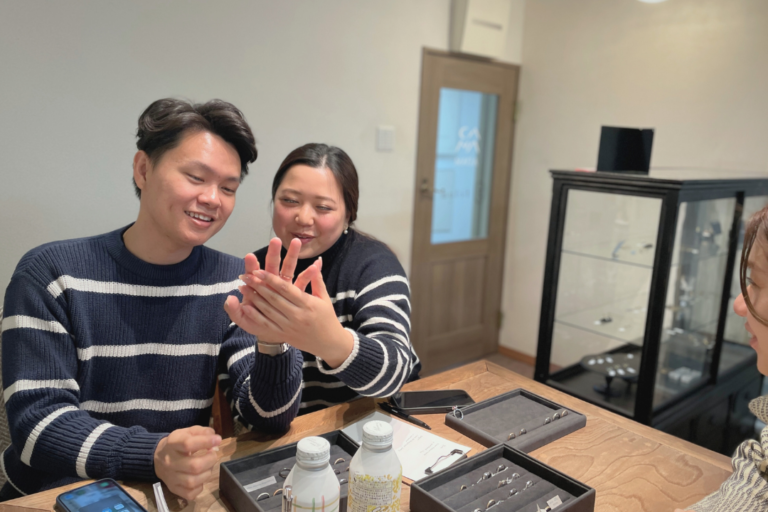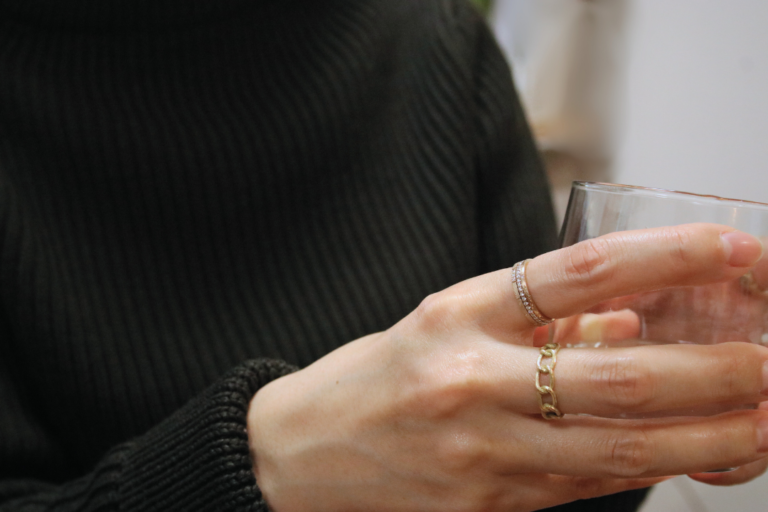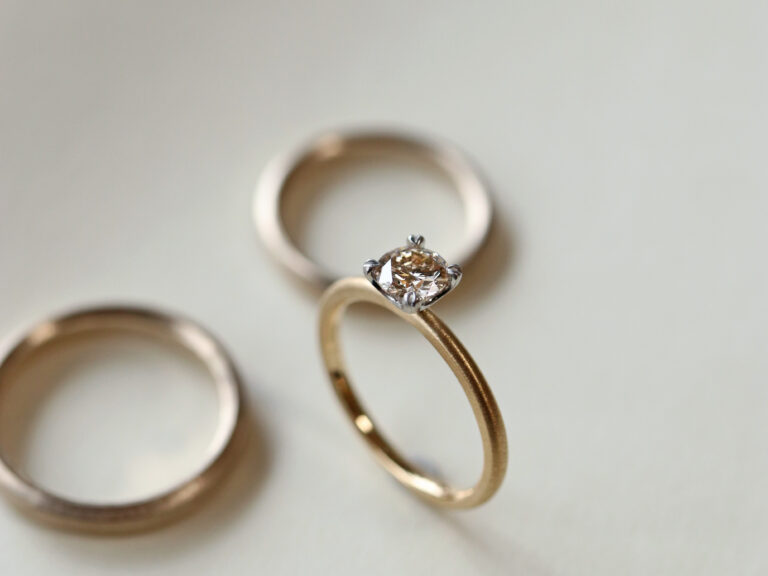This is Kubota from Adan Staff.
Here is a continuation of the tour of a polishing workshop in Yamanashi introduced previously.
In the previous blog, we showed how the loose pieces are set on the instrument and facets are cut.
>Click here to visit our blog.
This was also a masterpiece of skillful workmanship! But, it was a great experience,
In this article, we will introduce hand polishing, in which the surface is finished using only the senses of the hands.
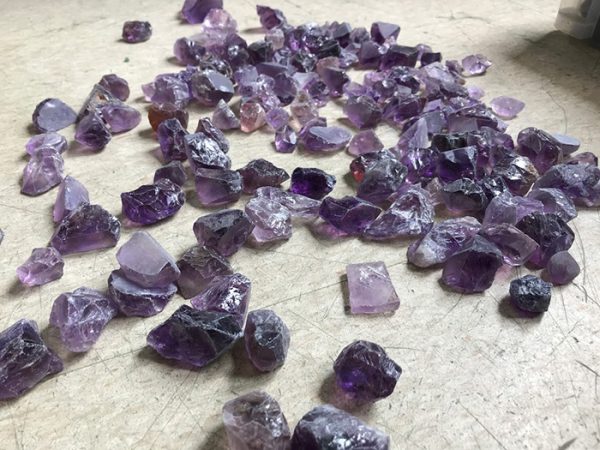
We start with an amethyst gemstone in this condition.
The craftsman quickly picked up the gemstone based on his longtime intuition, saying, "Hmmm, this looks like it would make a beautiful loose stone.
I had heard that they polish with their bare hands without using any equipment for setting angles, so I was excited to see how it would turn out.
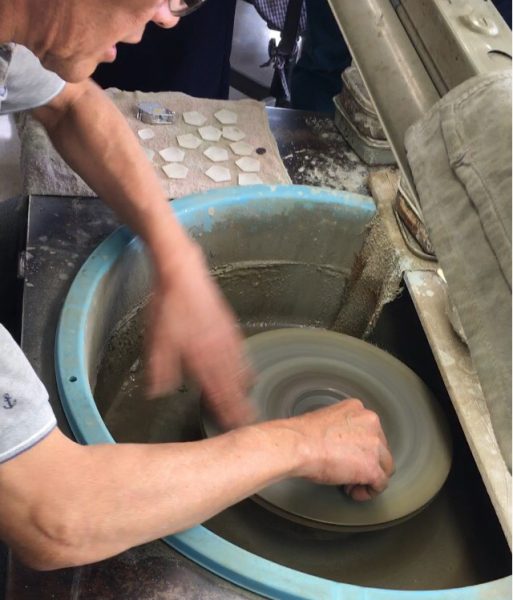
Roughing is done first on a rotating board.
We talked and talked and talked...
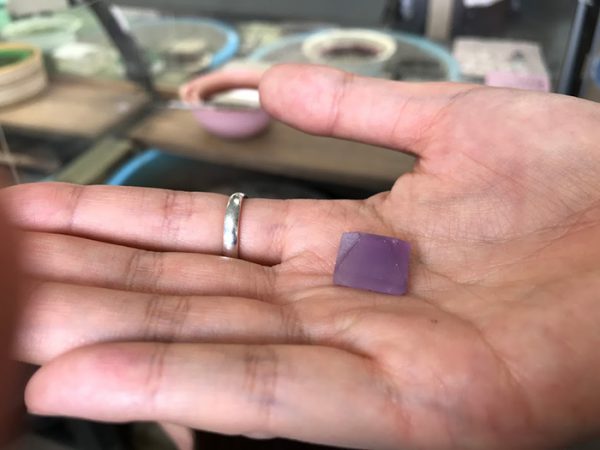
In no time at all, you have a rectangular shape!
This was a surprise to all of us.
With all due respect, I had assumed that hand polishing = rough cutting,
I had no idea that the error would be so obvious and square-shaped!
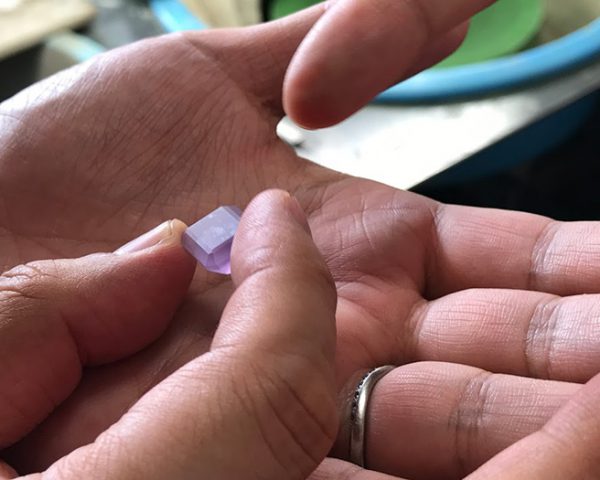
It was a sight to behold as the work was being completed in no time at all.
I was just astonished because I had thought that such a cut would be made with a device that could be set straight.
After this, we change the board to which the loose is applied and the abrasive to a finer one to polish the surface to a shiny finish.
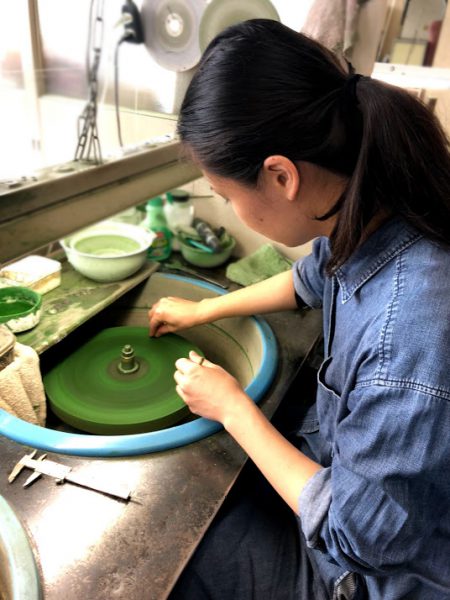
The facets are polished at the same angle so that they do not run down after they have been cut.
In fact, we dare to have a craftsman take over the baton and demonstrate this process.
I heard that it is difficult to polish a loose piece that was not cut by oneself but by someone else because the hands are different, but even so, the craftsmanship of polishing a loose piece to a perfect match by sound and hand feeling was well demonstrated here.
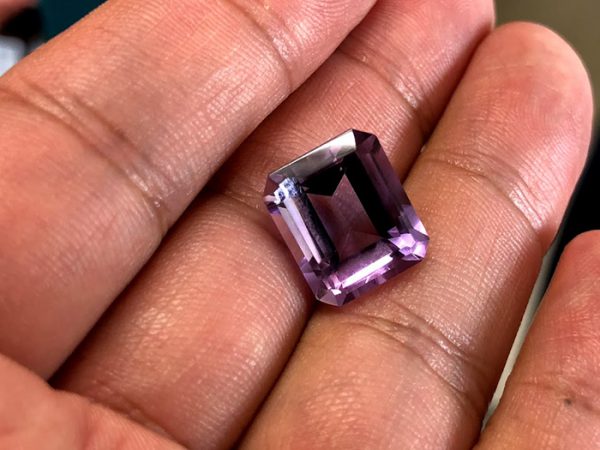
As you can see, it's shiny! I applaud you!
I spent a very intense time with a series of eye-opening experiences.
Thank you all very much!
